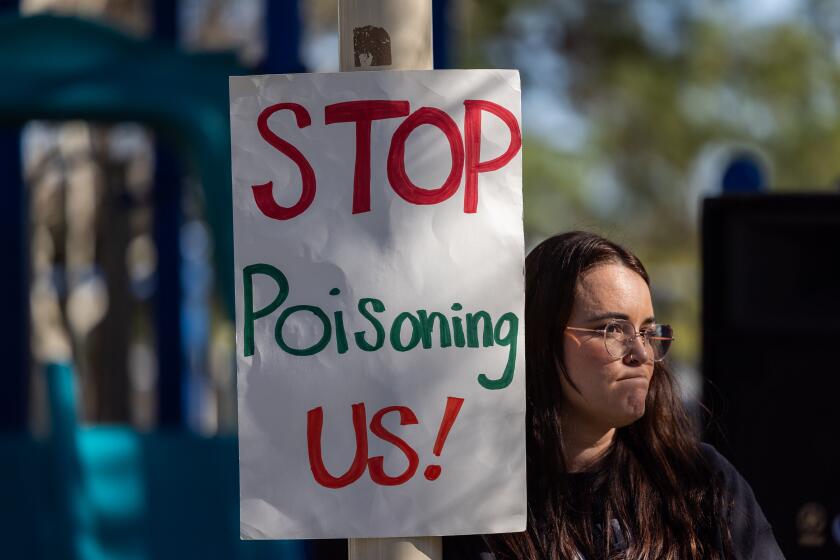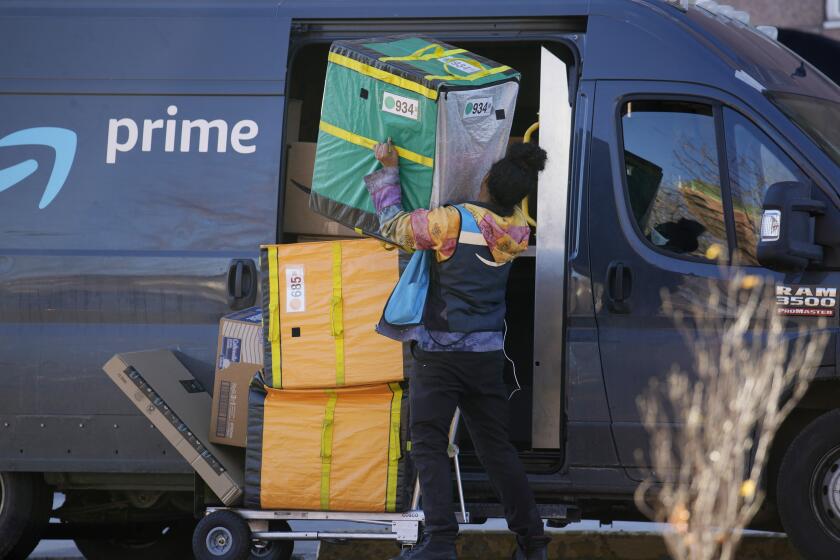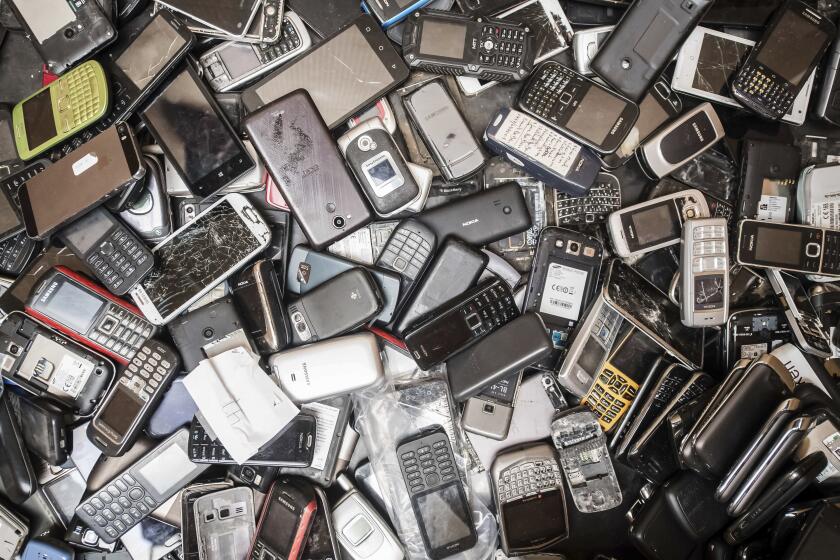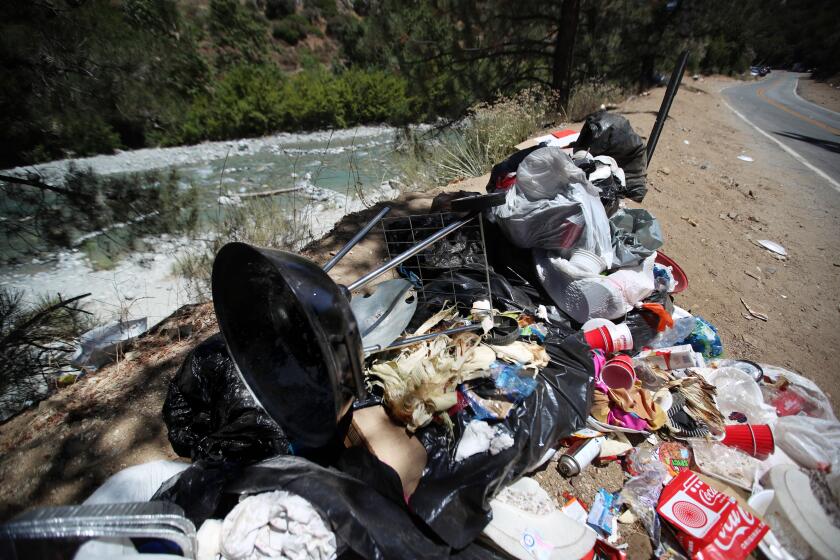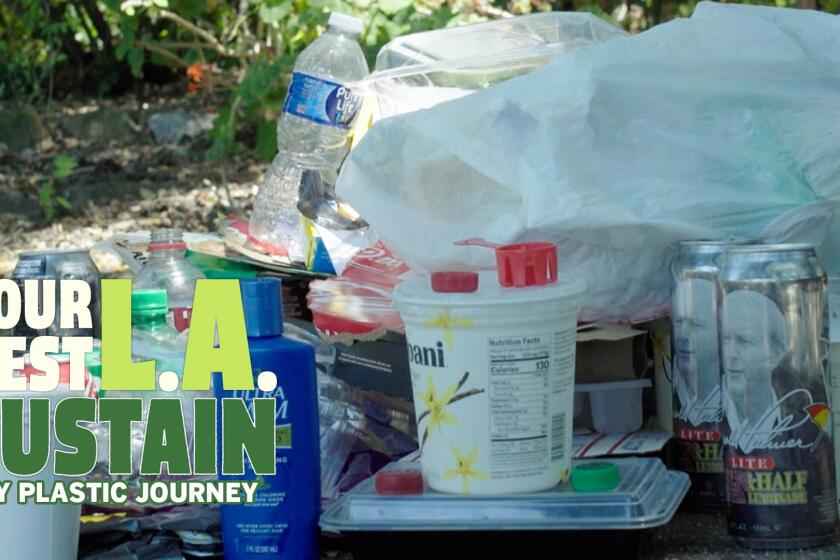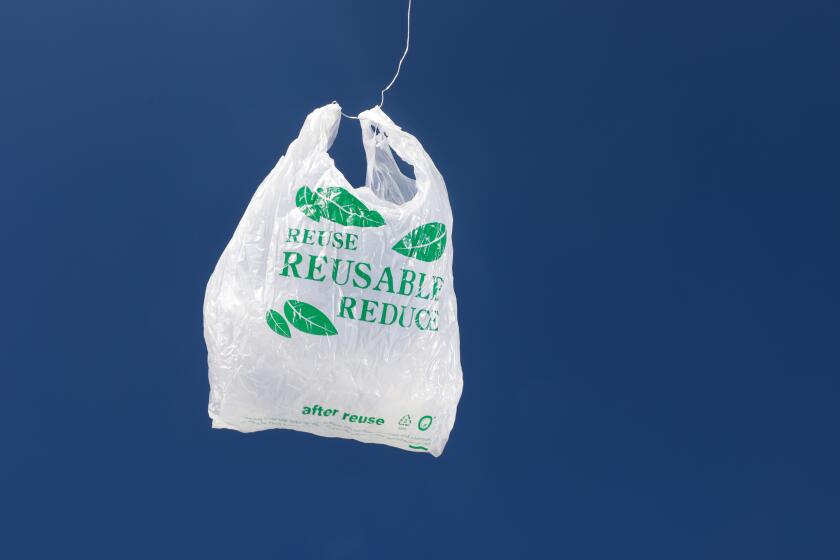Editorial: Whatever happened to L.A.’s plan to end its reliance on landfills?
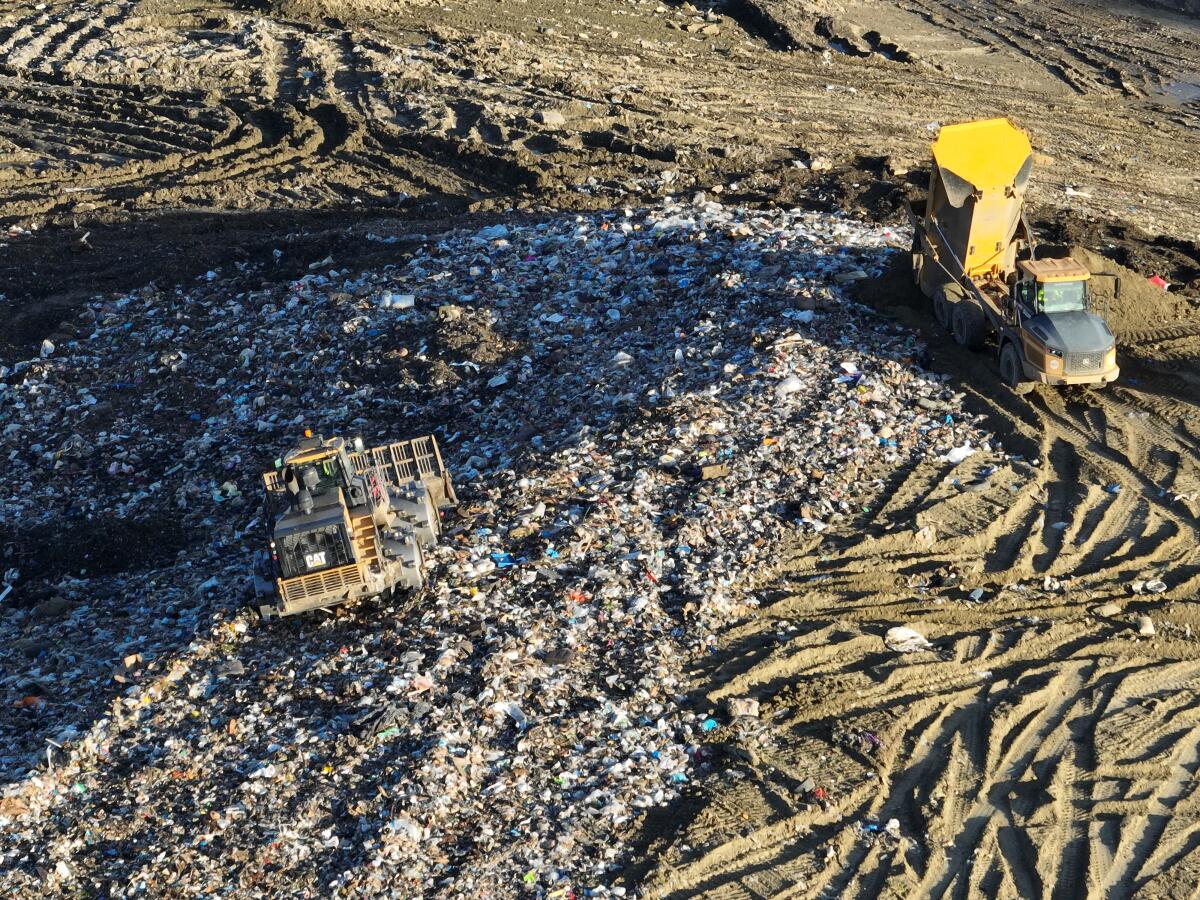
- Share via
The smoldering, stinking mess at the Chiquita Canyon Landfill in Castaic is a glaring example of the environmental and public health hazards created by burying our trash — and how state and local leaders have allowed this problem to pile up.
As county and state leaders consider what to do with the dump, they have to contend with another problem: If they close Chiquita Canyon, the trash will just be trucked to another landfill in the region, shifting the emissions and environmental impact to another community. That’s because Southern California, like most of the state, is still far too dependent on this primitive method of handling waste.
It wasn’t supposed to be this way.
For decades, landfills have been the cheapest, easiest way to deal with the mountains of garbage people dispose of every year. Now we have to deal with the impact on neighbors and the climate.
Nearly two decades ago, the city of Los Angeles adopted a visionary plan to divert 90% of the city’s trash from landfills by 2025 by recycling, composting food waste and developing new facilities that could turn trash into energy. That goal is still on the books, but the city stopped calculating its diversion rate after the state switched to per capita disposal rates instead. Still, it’s clear the city isn’t close to 90%; Los Angeles residents and businesses sent about 4 million tons of waste to landfills in 2022, according data from CalRecycle. For comparison, the city disposed of 3.7 million tons in 2004.
Los Angeles County set a goal to divert 80% of its waste from landfills by 2025. Today, the county diverts about 66% from landfills, but still sends 11 million tons to dumps each year.
A new report from CalPIRG reveals that that almost no Amazon packaging gets recycled. Instead, it ends up in a landfill.
What happened?
First, city and county officials didn’t predict the boom in waste production, particularly single-use plastic. Residents and businesses generated much more garbage than experts projected — and not just in Los Angeles. California and the U.S. have been landfilling more too. California’s recycling rate was 41% in 2022, down from 50% a decade earlier.
Experts blame the growth in e-commerce, which has greatly increased the amount of shipping materials in the waste stream, and the rise of plastic packaging, fast fashion and disposable and lower-quality goods on the market. Most of the bubble wrap, air pillows and plastic wrappers that arrive at your door end up in a landfill. Plastic takeout containers and small electronics and appliances, such as toasters or DVD players, are typically tossed rather than repaired or reused, and often can’t be recycled.
There aren’t many truly bipartisan issues that could revolutionize the world for the better. Right to repair is an exception.
The collapse of the global market for recycled materials didn’t help. China, which had been the world’s biggest buyer of scrap plastic, banned most plastic and paper imports in 2017, and other countries have restricted imports. Since then recycling centers in the U.S. have struggled to find places that will take, much less reuse, the plastics that people throw in the blue bin. In some cases, recycling centers are just sending their plastic to landfills.
And that’s another problem.
State and local recycling rates are misleading. State law requires jurisdictions to measure their recycling rates by how much stuff is put into the blue bin versus the black bin — not by how much of it is actually getting recycled. In reality, most of the stuff tossed in the blue bins is made of materials such as plastic that are too difficult or expensive to remake into new products.
The average American throws out three times more trash today than in 1960, and what we squander is killing us. But we can choose differently.
So even while cities boast of high recycling rates, a significant amount of material is still being sent to dumps or exported to foreign countries, where it may be recycled, landfilled, incinerated, or even worse, end up in rivers and oceans. The artificially high diversion rates obscure the reality that most California communities are still largely dependent on landfills.
While we generated more trash, the promise of facilities that could turn it into useful things never panned out. The city and county envisioned building “conversion technology” plants, which are common in Europe and Asia, and use heat, biological or chemical processes to turn waste into energy. The idea was to develop facilities here that could process food scraps, yard waste, some plastics and other materials left over after the recyclable paper, glass and plastics and green waste were sorted out from the waste stream.
But they ran into several hurdles at the local and state level, said former Councilmember Greig Smith, who developed the RENEW LA plan to help reduce the city’s reliance on Sunshine Canyon Landfill in his San Fernando Valley district.
Environmental groups and some lawmakers opposed the technology because they equated conversion plants with incinerators that burned trash and polluted nearby communities. Research showed that such plants met air quality standards in the countries where they operated and could meet California’s stringent standards. Still the skepticism, plus permitting, regulatory and funding barriers for the new technology, hampered widespread adoption. And it was easier and cheaper to keep using landfills.
The state’s latest recycling failures are unfortunate but not shocking. The petrochemical industry has a long history of outsmarting regulation.
Meanwhile, these facilities are central to the state’s aggressive target to reduce by 75% the amount of food and green waste sent to landfills by 2025. Cities have struggled to meet the mandate, given the need to develop composting and waste-to-energy facilities to handle all that material.
But Los Angeles and California are now reckoning with the consequences of our throw-away culture. Decomposing organic waste in landfills is a major source of planet-warming methane emissions, which slows the state’s fight against climate change. There’s growing concern about the proliferation of plastic waste, with tiny microplastics found in drinking water, food and the human body. And the smoldering stink at Chiquita Canyon Landfill, which is coming from a portion of the dump that closed years ago, is reminder that burying trash has serious long-term environmental impacts.
To help, California lawmakers in 2022 adopted a revolutionary law to start phasing out all varieties of single-use plastics in 2025. But it will be phased in over a decade and meanwhile landfill space is running out. L.A. County projects its 10 active landfills will be full in 15 years. And Los Angeles city and county’s ambitious zero-waste plans to reduce their dependence on dumps are meaningless without political will and leadership to make change happen.
The smoldering environmental crisis at Chiquita Canyon Landfill should be a wake-up call to state and local leaders that they can no longer avoid making hard decisions about trash. It would be an environmental tragedy to expand or build new landfills when there are smarter, more responsible ways to manage waste.
More to Read
A cure for the common opinion
Get thought-provoking perspectives with our weekly newsletter.
You may occasionally receive promotional content from the Los Angeles Times.
